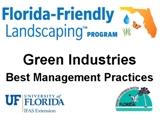
by Matthew Orwat | Mar 4, 2014
 In 2014, a new law took effect requiring all commercial fertilizer applicators (for hire) to have a license. This law was passed in 2009 and took effect on January 1 of this year. A requirement that must be completed to obtain this license is to successfully complete a Green Industries Best Management Practices (GI-BMP) training class. One option to fulfill this requirement is to enroll in a GI-BMP class at the local county extension office. This training is provided by UF IFAS extension at various extension offices across Florida in both English and Spanish.
In 2014, a new law took effect requiring all commercial fertilizer applicators (for hire) to have a license. This law was passed in 2009 and took effect on January 1 of this year. A requirement that must be completed to obtain this license is to successfully complete a Green Industries Best Management Practices (GI-BMP) training class. One option to fulfill this requirement is to enroll in a GI-BMP class at the local county extension office. This training is provided by UF IFAS extension at various extension offices across Florida in both English and Spanish.
These classes instruct green industry professionals in techniques of fertilizer, pesticide and irrigation application that help reduce and prevent pollution caused by runoff and leaching. Runoff and leaching is usually driven by rainfall and creates non-point source pollution. By learning how to implement the safest methods of fertilizer and pesticide application into their daily work, green industry professionals can do their part in the effort to maintain and improve Florida’s water quality and environment.
After receiving a certificate of completion, a person must pay $25 and apply to receive a limited certification for urban landscape commercial fertilizer application. A person possessing such a certification is not subject to additional local testing. The certification expires 4 years after the date of issuance and needs to be renewed at that time. Florida City and County employees that apply fertilizer as part of their job duties do not need to obtain the license to be in compliance with the new fertilizer rule, but they must complete the training and obtain a certificate of completion from the GI-BMP program.
[important]The Next GI-BMP class will be held Tuesday, March 11 at the UF IFAS Washington County Extension Office in Chipley Florida. This office is located at 1424 Jackson Ave (also US HWY 90) Suite A. It begins at 8am central time in the East Wing conference room. To register, contact Matthew Orwat or Cynthia Jackley at 850-638-6180 or mjorwat@ufl.edu Cost is $20.00 and lunch is provided.[/important]
The GI-BMP program has FDACS approval for 2 Core CEUs and 2 additional CEUs for the following licenses:
- Private Applicator – Agriculture
- Ornamental & Turf
- Limited Lawn & Ornamental
- Limited Landscape Maintenance
- Commercial Lawn and Ornamental
- Limited Commercial Fertilizer Applicators
- (2) Limited Urban Fertilizer credit hours
Article by Matthew Orwat and Sheila Dunning
by Mary Salinas | Nov 4, 2013
For centuries, people annoyed with plant pests have used oils to control insects, mites, and even some fungal diseases. Current oil products are better than ever!

Sample oil products for pest control. Photo by Mary Derrick.
Commercially available horticultural oils are mineral oils from refined petroleum products. Impurities are removed and then an emulsifying agent is added that allows the oil to mix with water for application. Neem oil is a newer product that has become increasingly popular; the oil is an extract of the seeds of the neem tree.
What are some of the advantages of using an oil for pest control?
- Oils are inexpensive and easy to apply
- Oils can be used on most plants (check the label for a list!)
- Oils control a wide range of pests that feed on plants (again, check the label for a list of pests the product will control!)
- Oils pose a low risk to people, pets, and desirable beneficial predators
- Since oils kill pests by blocking their breathing holes (spiracles) and/or gumming up their mouthparts, there is no chance for resistance to develop
- One product can control both insects and some diseases like powdery mildew at once
- Oils can be combined with some other pesticides to provide greater control
[warning] Don’t combine with, or use within 30 days of, any sulfur based pesticide. The combination can harm your plants![/warning]
There are always drawbacks to a product. What are the drawbacks?
- Some plants (including cryptomeria, junipers, cedars, maples, and redbud) are damaged by oils – check the label!
- Ensure good coverage during spraying as pests must be contacted with the oil in order for the control to work
- Oils break down quickly and reapplication may be necessary
- Check the label for instructions on the temperature range when it can be used. Older formulations generally are safe when temperatures are in the 40 to 80°F range but ultra-fine oils can generally be safely applied during hotter weather.
For further information:
Natural Products for Insect Pest Management from UF IFAS Extension
Insect Control: Horticultural Oils from Colorado State University Extension
Less Toxic Pesticides from Clemson University Cooperative Extension
by Roy Carter | Nov 4, 2013
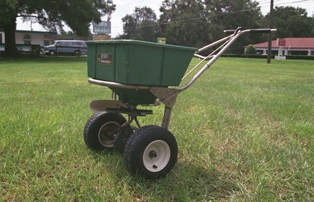
Fertilizer Spreader on lawn. Image Credit UF IFAS Extension FYN Program
Fertilizers are manufactured from a wide variety of materials to supply plant nutrients. Once these materials are mixed, it becomes difficult to distinguish the materials present. In the past, a few unscrupulous manufacturers have taken advantage of this to increase their profit. To protect consumers and legitimate manufacturers from such practices, The Florida legislature enacted the first fertilizer law in 1889 and has amended it many times since enactment. These laws regulate the manufacture and sale of fertilizer in the state.
The law requires that the manufacturer purchase and affix a label to each bag, package, container, or lot of fertilizer offered for sale in the state. The law requires that each label show specific information about the analysis and composition of the mixture or material.
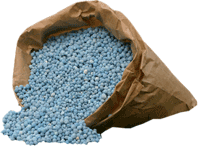
Image Credit UF IFAS
The key information comes in the guaranteed analysis section of the label. It tells the home gardener the ratio by percentage of the primary plant nutrients. The number s are in the order of these primary nutrients; Nitrogen, Phosphorus and Potassium. For example an 8-8-8 fertilizer would be eight percent nitrogen compound, eight percent phosphorus compound and eight percent potassium compound.
There’s some other information in this section of the label that may seem even more complicated but it’s also important. The label explains how much chlorine the fertilizer can contain. Chlorine can reduce the quality of some vegetable and flowers.
It informs the buyer what materials the primary plant nutrients are derived from. This can assist in determining the quality of the fertilizer.
Probably the most difficult part of the label to read, certainly the hardest part to describe, is the information listed right after the total nitrogen figure in the guaranteed analysis section. In addition the total amount of nitrogen, the label gives the amount of each of several types of nitrogen present in the fertilizer. This information will seem confusing, but it also offers a glimpse into how the fertilizer will work in specific types of soil.
Terms such as nitrate nitrogen ammoniacal nitrogen, water-soluble organic nitrogen and/or urea nitrogen can be used by plants fairly quickly. These nitrogen forms in fertilizer are great for a vegetable garden. But nitrate and water-soluble organic nitrogen are rapidly leached out of the soil so they don’t last very long. Ammoniacal and water insoluble nitrogen will stay longer in sandy soils.
Fertilizer with a high percentage of natural organic nitrogen is used by the plants slowly over a fairly long period of time. This kind of slow release fertilizer would be good for lawns helping them stay green without causing spurts of extra fast growth.
This is a complicated subject, hard to fully explain in one article. This is the take home message: almost any fertilizer purchased in Florida is a good one if it has the ingredients required for plant health and if the price is fair in terms of the total amount of plant nutrients it contains.
For more information on Florida fertilizer label contact your local UF IFAS Extension office or read this publication on the Florida Fertilizer Label.
by Matthew Orwat | Oct 23, 2013

Image Credit: UF IFAS EDIS
From Dr. John P. Hayes”
“Florida Crossroads made a 28 minute video entitled “Seeds of Change” featuring the IFAS breeding efforts to create new varieties of blueberries, strawberries, tomatoes, and other crops, and the ways that these programs have influenced Florida industry.
For those of you who are familiar with our breeding programs, you’ll enjoy seeing some of our scientists on the screen. For those who aren’t familiar with IFAS development of new varieties, it is well worth the watch and I’d encourage you to do so. Our breeding program and the scientists engaged in breeding at UF are world class.”

by Matthew Orwat | Oct 21, 2013
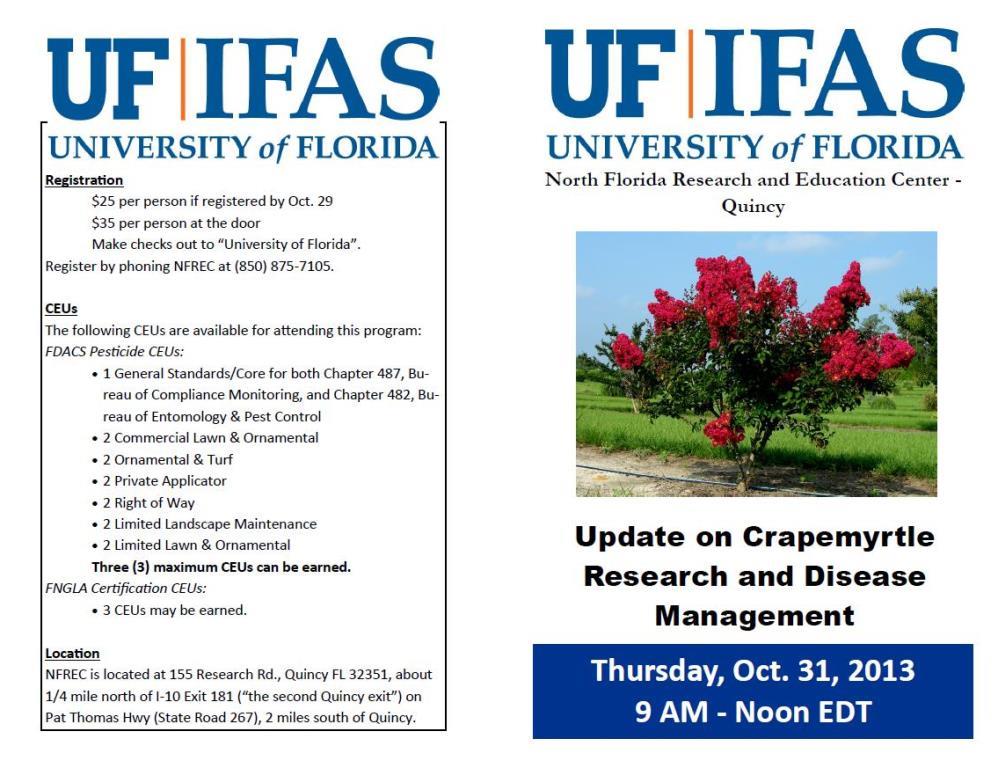
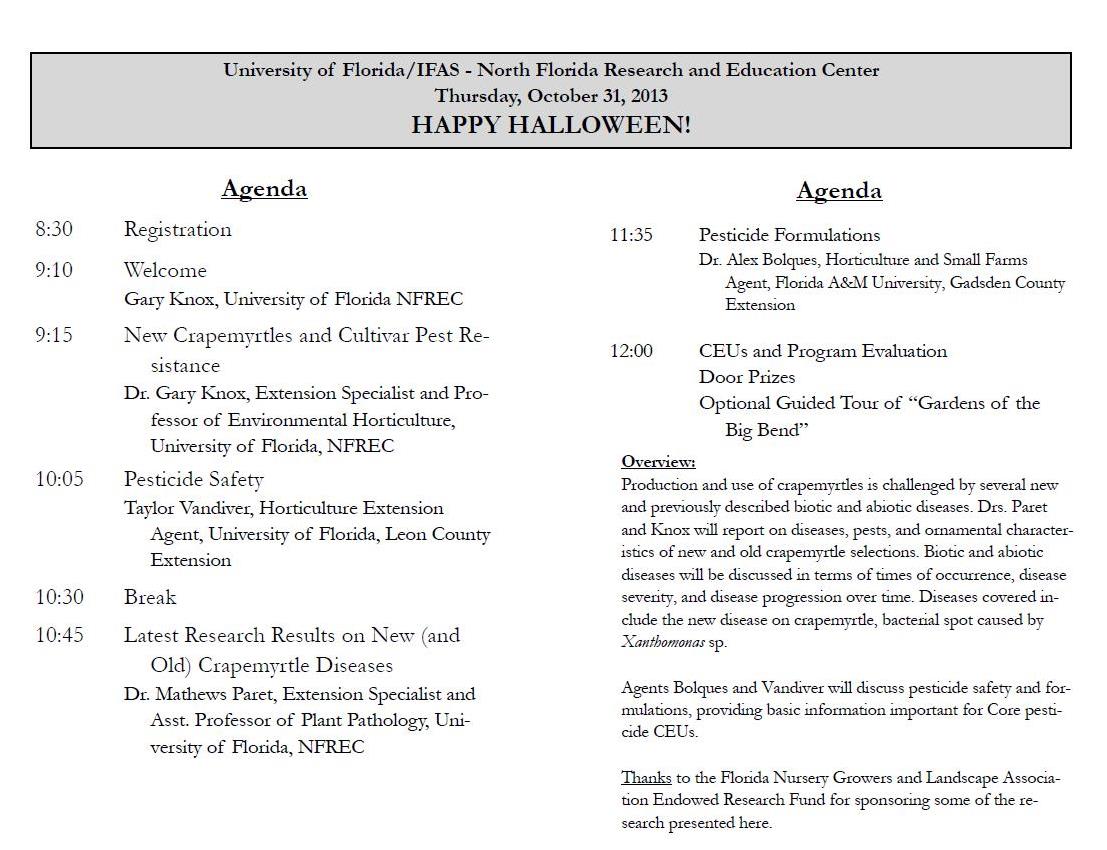
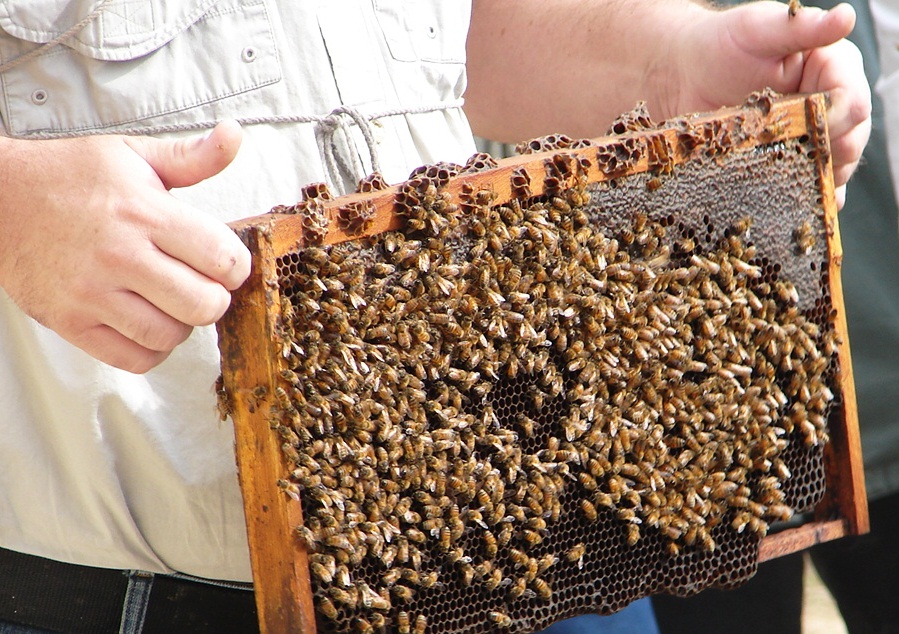
by Matthew Orwat | Oct 7, 2013
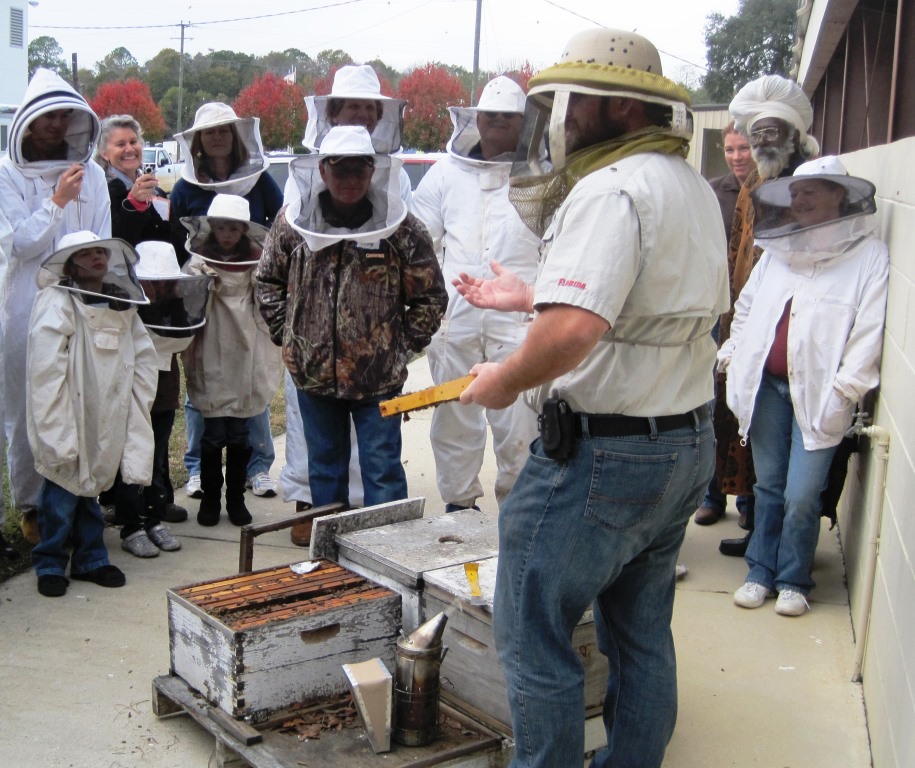
The Beekeeping trade-show will provide beekeepers of all skill levels and ages a chance to interact with entomologists, beekeepers, real bee hives, and beekeeping equipment vendors.
The third annual UF/IFAS Beekeeping Field day and Trade-show is proud to be part of the 2013 Florida State Beekeepers Association Meeting in Chipley Florida. This trade-show event will provide educational opportunities through hands-on activities and interaction with expert beekeepers and vendors for hundreds of local beekeepers. Beekeepers with all levels of experience are encouraged to attend!
The Day’s Agenda: (8:30 – 2:30 Central Time Zone)
Topics at the Trade-show and Field day include:
- “Update on the Beekeeping Industry”
- “Splitting Beehives”
- “What’s the Buzz about Honey?”
- “Products of the Hive”
- “Florida Honeybee Inspectors Question and Answer Session”
- Smoker Lighting Contest, Door Prizes, Lunch, and more!
Registration:
- $15.00 per Person, $10.00 for Each Additional Family Member (Includes refreshments and lunch)
- Call your local County Extension Office, listed below, to register no later than October 25th. (We need to know how much food to prepare!)
Bay County 850-784-6105 Jefferson County 850-342-0187
Jefferson County 850-342-0187
Calhoun County 850-674-8323 Leon County 850-606-5202
Leon County 850-606-5202
Escambia County 850-475-5230 Liberty County 850-643-2229
Liberty County 850-643-2229
Franklin County 850-653-9337 Okaloosa County 850-689-5850
Okaloosa County 850-689-5850
Gadsden County 850-875-7255 Santa Rosa County 850-623-3868
Santa Rosa County 850-623-3868
Gulf County 850-639-3200 Wakulla County 850-653-9337
Wakulla County 850-653-9337
Holmes County 850-547-1108 Walton County 850-892-8172
Walton County 850-892-8172
Jackson County 850-482-9620 Washington County 850-638-6180
Washington County 850-638-6180
A detailed workshop agenda is just a “click” away at this link: Beekeepers Field Day And Trade Show 2013

 In 2014, a new law took effect requiring all commercial fertilizer applicators (for hire) to have a license. This law was passed in 2009 and took effect on January 1 of this year. A requirement that must be completed to obtain this license is to successfully complete a Green Industries Best Management Practices (GI-BMP) training class. One option to fulfill this requirement is to enroll in a GI-BMP class at the local county extension office. This training is provided by UF IFAS extension at various extension offices across Florida in both English and Spanish.
In 2014, a new law took effect requiring all commercial fertilizer applicators (for hire) to have a license. This law was passed in 2009 and took effect on January 1 of this year. A requirement that must be completed to obtain this license is to successfully complete a Green Industries Best Management Practices (GI-BMP) training class. One option to fulfill this requirement is to enroll in a GI-BMP class at the local county extension office. This training is provided by UF IFAS extension at various extension offices across Florida in both English and Spanish.








